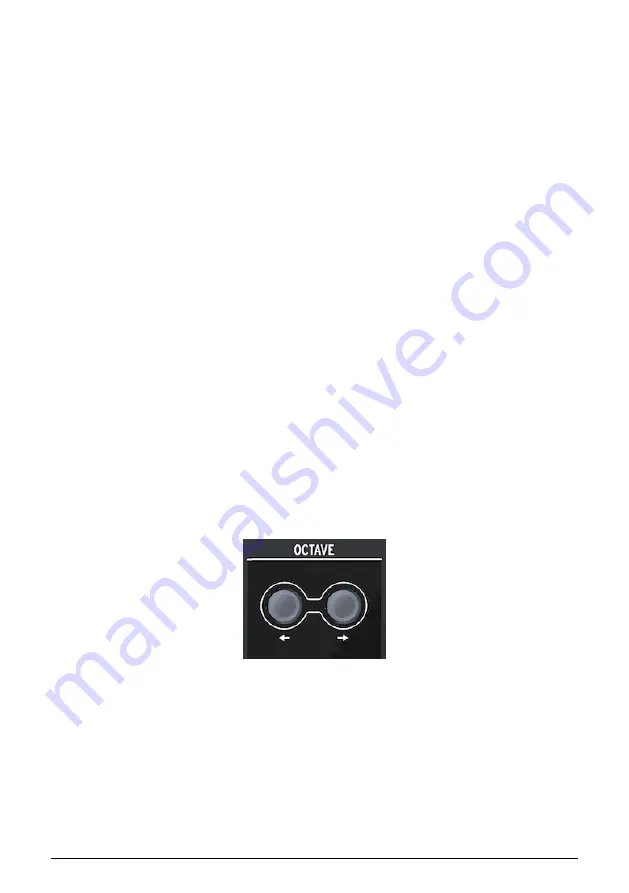
Note:
The Glide setting in Utility enables you to define whether the Glide knob introduces
a time-based , a time synced or a rate-based glide effect. A time-based glide generates a
glide that is fixed. A rate-based glide generates a glide that is relative to the rate set with the
Arp/Seq rate.
When set to Time Glide can vary from zero to 10 seconds as explained above. In Synced
mode you can select how glide will sync, with sync values being: 1/32T, 1/32, 1/16T, 1/16, 1/8T,
1/8, 1/4T, 1/4, 1/2T, 1/2 and 1/1.
In Rate mode you set how fast Glide will rise or fall within an octave: at 0 MS, the change
will be immediate, at 10 Ms the change will be more gradual.
A nice trick is to modulate the amount of glide with keyboard pressure. Define Glide as
a modulation target in the Matrix and pressure as the source. By carefully adjusting the
amount of modulation with the matrix attenuvertor you can optimize the glide effect.
Experiment with selecting various LFO waveforms as the modulation source. Each LFO
waveform will have a different effect on the intensity and slope of the glide. Setting the LFO
to Sync will ensure that each note has a different glide shape applied to it. Increasing or
decreasing the LFO rate will cause the LFO to sync to varying rates of the internal clock. This
will also affect the speed of the glide effect.
Freaky tip:
Glide is also a good target to modulate with the modulation tracks of the
sequencer:
• Turn on the Sequencer (Shift + Arp | Seq).
• Select sequencer A or B.
• Press Record and step-record a melody. At the end of your sequence, the
sequencer will turn off recording automatically.
• Now press Record again and move the glide knob wherever you want a glide
effect to appear in the sequence.
10.4. Octave Buttons
Using the OCTAVE buttons you can transpose the output of the keyboard up or down by
octaves.
To be exact, the range is three octaves up and three octaves down. We've included a little
nicety, that you might not notice with knowing to look for it: the rhythm with which the
Octave buttons blink increases when you move further from the zero octave point. So at
-3 and +3 octaves it flashes at maximum speed. Knowing this can help you to remember
where you are (pitch-wise) on a poorly-lit stage. The keyboard itself is two octaves but the
whole pitch range is eight octaves, which should facilitate all but the most extreme musical
adventures.
Note:
Octave shift is saved with the preset.
The Octave buttons
61
Arturia - User Manual MicroFreak - The Keyboard Section
Содержание MICROFREAK
Страница 1: ...USER MANUAL...













































